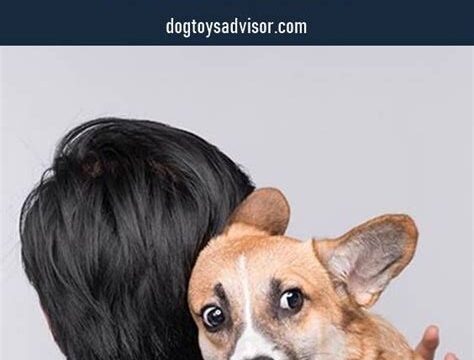Do you want to see your furry friend grow into a confident and self-assured pooch? Just like humans, dogs can also struggle with confidence and self-esteem issues, and it’s important for pet parents to recognize the signs and take steps to help their dogs overcome these challenges. In this blog post, we will explore the various ways to boost your dog’s confidence and build their self-esteem. From identifying signs of low confidence to seeking professional help for severe issues, we will cover it all. The importance of building a strong bond, effective techniques for socialization and exposure, positive reinforcement training, creating a safe and stimulating environment, the role of physical exercise, and using interactive toys and puzzles for mental stimulation will all be discussed. So, if you’re ready to help your canine companion become the most confident version of themselves, keep reading for some valuable insights and tips.
Identifying signs of low confidence in dogs
It’s important for pet owners to be able to recognize the signs of low confidence in their dogs in order to provide the necessary support and care. One of the most common signs of low confidence in dogs is excessive fear and anxiety. This can manifest in behaviors such as cowering, trembling, or hiding in response to certain stimuli or situations. Additionally, dogs with low confidence may exhibit submissive behaviors, such as excessive licking, rolling over, or urinating when approached by humans or other animals.
Another sign of low confidence in dogs is a lack of interest in social interaction. Dogs who lack confidence may avoid social situations or show aggression towards other animals as a defense mechanism. They may also display destructive behaviors, such as excessive barking, chewing, or digging, as a way to cope with their insecurities.
Furthermore, physical symptoms, such as excessive shedding, drooling, or panting, can also be indicators of low confidence in dogs. These symptoms often accompany stress and anxiety, which are common in dogs with low confidence. It’s important for pet owners to pay attention to these signs and seek professional help if necessary to address their dog’s emotional well-being.
In conclusion, dogs can display a variety of signs that indicate low confidence, ranging from behavioral to physical symptoms. By recognizing and addressing these signs, pet owners can take proactive steps to support their dogs and improve their overall well-being.
The importance of building a strong bond with your dog
Building a strong bond with your dog is crucial for a harmonious and fulfilling relationship. Dogs are inherently social animals, and they thrive on companionship and interaction with their human counterparts. By establishing a strong bond, you can create a sense of trust and security for your dog, which is essential for their overall well-being.
One of the main benefits of building a strong bond with your dog is improved communication. When you have a close connection with your dog, you can better understand their body language, behaviors, and needs. This allows for more effective training, better problem-solving, and a deeper understanding of your dog‘s unique personality.
Additionally, a strong bond with your dog can lead to increased loyalty and obedience. When your dog feels connected to you, they are more likely to listen to your commands, respect boundaries, and exhibit good behavior. This can make daily interactions with your dog more enjoyable and less stressful.
Furthermore, building a strong bond with your dog can enhance both their physical and mental well-being. Dogs that feel emotionally connected to their owners are often happier, more confident, and less prone to anxiety or behavioral issues. This can lead to a healthier and more fulfilling life for your furry friend.
Effective techniques for socialization and exposure
When it comes to socializing your dog, exposure to different environments, people, and animals is key. One effective technique is to gradually introduce your dog to new experiences, starting with low-stress situations and gradually increasing the level of exposure. This can help build your dog’s confidence and reduce anxiety in new situations.
Another technique is to utilize positive reinforcement during socialization and exposure. Whenever your dog exhibits calm and confident behavior in a new environment or around unfamiliar people or animals, be sure to reward them with treats, praise, or toys. This helps to associate new experiences with positive outcomes and can help your dog feel more at ease in different situations.
Consistency is also crucial when it comes to socialization and exposure. Regularly exposing your dog to new people, environments, and experiences can help them become more comfortable and confident in various situations. This can also help prevent fear-based aggression or anxiety-related behavior problems.
Finally, seeking the help of a professional dog trainer or behaviorist can be an effective technique for socialization and exposure. They can provide guidance on how to properly socialize your dog and offer support for any specific challenges or issues that may arise during the process.
Boosting confidence through positive reinforcement training
Positive reinforcement training is a powerful tool for boosting a dog’s confidence. By rewarding desired behaviors with treats, praise, or play, you can help your dog feel more secure and self-assured. When a dog knows that good things happen when they exhibit certain behaviors, they are more likely to repeat those behaviors and feel good about themselves.
Consistency is key when it comes to positive reinforcement training. It’s important to reward your dog every time they demonstrate the desired behavior, and to withhold rewards for unwanted behaviors. This helps your dog understand exactly what is expected of them, and builds their confidence as they continue to succeed.
Additionally, positive reinforcement training helps to strengthen the bond between you and your dog. When your dog knows that you are their source of positive reinforcement, they will look to you for guidance and support, which can further boost their confidence.
Overall, positive reinforcement training is a highly effective and humane way to build your dog’s confidence, and create a strong, trusting relationship between you and your furry friend.
Building a safe and stimulating environment for your dog
Creating a safe and stimulating environment for your dog is essential for their overall well-being and happiness. Dogs thrive in environments that are comfortable and engaging, and as pet owners, it is our responsibility to ensure that they have a space where they can feel secure and content.
One of the first steps in building a safe environment for your dog is to make sure that their living space is free from any potential hazards. This includes removing any toxic plants, securing loose electrical cords, and ensuring that any small objects that could be swallowed are out of reach.
In addition to safety measures, it’s important to provide your dog with plenty of mental and physical stimulation. This can be achieved through interactive toys, puzzle feeders, and regular exercise. Mental stimulation is just as important as physical exercise for dogs, and engaging their minds can help prevent boredom and destructive behavior.
Finally, creating a comfortable and stimulating environment for your dog also includes providing them with a designated space where they can relax and feel safe. Whether it’s a cozy bed, a crate, or a quiet corner of the house, having a space to call their own can help reduce stress and anxiety for your furry friend.
The role of physical exercise in improving self-esteem
Physical exercise plays a crucial role in the overall well-being of dogs, including their mental and emotional health. Regular physical activity not only helps to keep dogs physically fit but also contributes to a boost in their self-esteem and confidence. When dogs engage in activities such as running, jumping, and playing, it releases endorphins in their brains, which are known as feel-good hormones. These endorphins help to reduce stress and anxiety, promoting a positive mindset and a sense of accomplishment.
Another important aspect of physical exercise is the opportunity for dogs to explore their environment and gain new experiences. When dogs are taken on walks or to new outdoor locations, they are exposed to different sights, sounds, and smells, which can help to stimulate their senses and build their confidence. This exposure to new stimuli can provide mental enrichment and contribute to a greater sense of self-assuredness in dogs.
Moreover, physical exercise allows dogs to develop their physical skills and coordination, leading to a greater sense of mastery and competence. When dogs engage in agility training, for example, they learn to navigate obstacles and challenges, which can enhance their problem-solving abilities and self-assurance. By conquering physical challenges, dogs can gain a sense of pride and accomplishment, ultimately boosting their self-esteem.
It is essential for dog owners to prioritize physical exercise as part of their pet’s routine to foster a healthy self-image and emotional well-being. Whether it’s through daily walks, interactive play, or specialized training activities, the role of physical exercise in improving self-esteem is undeniable.
Using interactive toys and puzzles for mental stimulation
Interactive toys and puzzles can be a great way to provide mental stimulation for your dog. Dogs, like humans, need mental exercise to keep their minds sharp and engaged. These types of toys can provide hours of entertainment and challenge for your furry friend.
When choosing interactive toys and puzzles for your dog, it is important to consider their individual preferences and skill level. Some dogs may prefer puzzles that involve finding hidden treats, while others may enjoy toys that require them to manipulate levers or buttons to access a reward.
Introducing interactive toys and puzzles to your dog’s routine can also help to alleviate boredom and prevent destructive behaviors. By providing them with a stimulating activity, you can keep their minds occupied and reduce the likelihood of them engaging in unwanted behaviors.
Overall, incorporating interactive toys and puzzles into your dog’s daily routine can provide mental stimulation, prevent boredom, and strengthen the bond between you and your furry companion.
Seeking professional help for severe confidence issues
When it comes to severe confidence issues in dogs, it’s important to recognize the signs and understand the potential impact on their overall well-being. Some common signs of low confidence in dogs include excessive barking, hiding, cowering, or submissive urination. These behaviors can be distressing for both the dog and their owners, and seeking professional help is often necessary to address the underlying issues.
Professional help for severe confidence issues in dogs may involve working with a certified dog behaviorist or trainer who has experience in dealing with such cases. These professionals can conduct a thorough assessment of the dog’s behavior and environment to identify the root cause of the confidence issues. They can then develop a customized training and behavior modification plan to help the dog build confidence and overcome their fears.
In some cases, severe confidence issues in dogs may be linked to past trauma, abuse, or neglect. Professional help can provide the necessary support and guidance to help these dogs heal and regain their trust in humans. Additionally, seeking professional help for severe confidence issues can also ensure that the dog’s physical and mental well-being is prioritized, and any underlying medical conditions contributing to the behavior can be addressed.
Ultimately, seeking professional help for severe confidence issues in dogs is crucial for their overall quality of life and happiness. With the guidance and expertise of trained professionals, dogs can overcome their fears and develop the confidence they need to thrive in a safe and loving environment.





